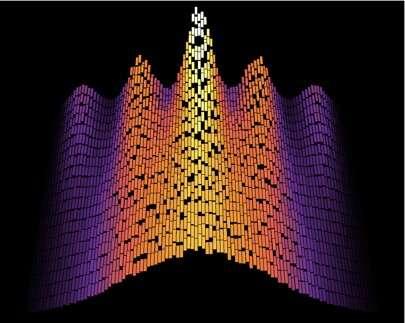Complex oscillations in a quantum system simplify with time
The phonons distribution is complex (upper curves) and then simplifies with time to a Gaussian bell curve (lower curve)
Image Credit: S. Sotiriadis
With a sophisticated experiment, physicists have shown that in a one-dimensional quantum system, the initially complex distribution of oscillations or phonons can change into a simple Gaussian bell curve over time. A joint research group of the Freie Universität Berlin and the HZB, led by professor Jens Eisert, developed theoretical foundations for an experiment that was carried out at the Vienna University of Technology.
News from Feb 01, 2021
The experimental team of Prof. Dr. Jörg Schmiedmayer and Dr. Thomas Schweigler from TU Wien created a synthetic quantum system in which the distribution of phonons can be observed particularly sharply. "The measurement data initially represent the complex dynamics of the phonons. But the complexity is lost over time and the distribution takes on the shape of a Gaussian bell curve," explains Dr. Marek Gluza, co-author of the study and postdoc with Jens Eisert.
The results of the joint research were published in the renowned journal Nature Physics.
Keywords
- Gaussian models
- HZB
- Jens Eisert
- Marek Gluza
- nature physics
- non-Gaussian correlations
- quantum many-body system
- quantum physics
- quantum research
- TU Wien
